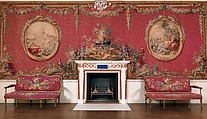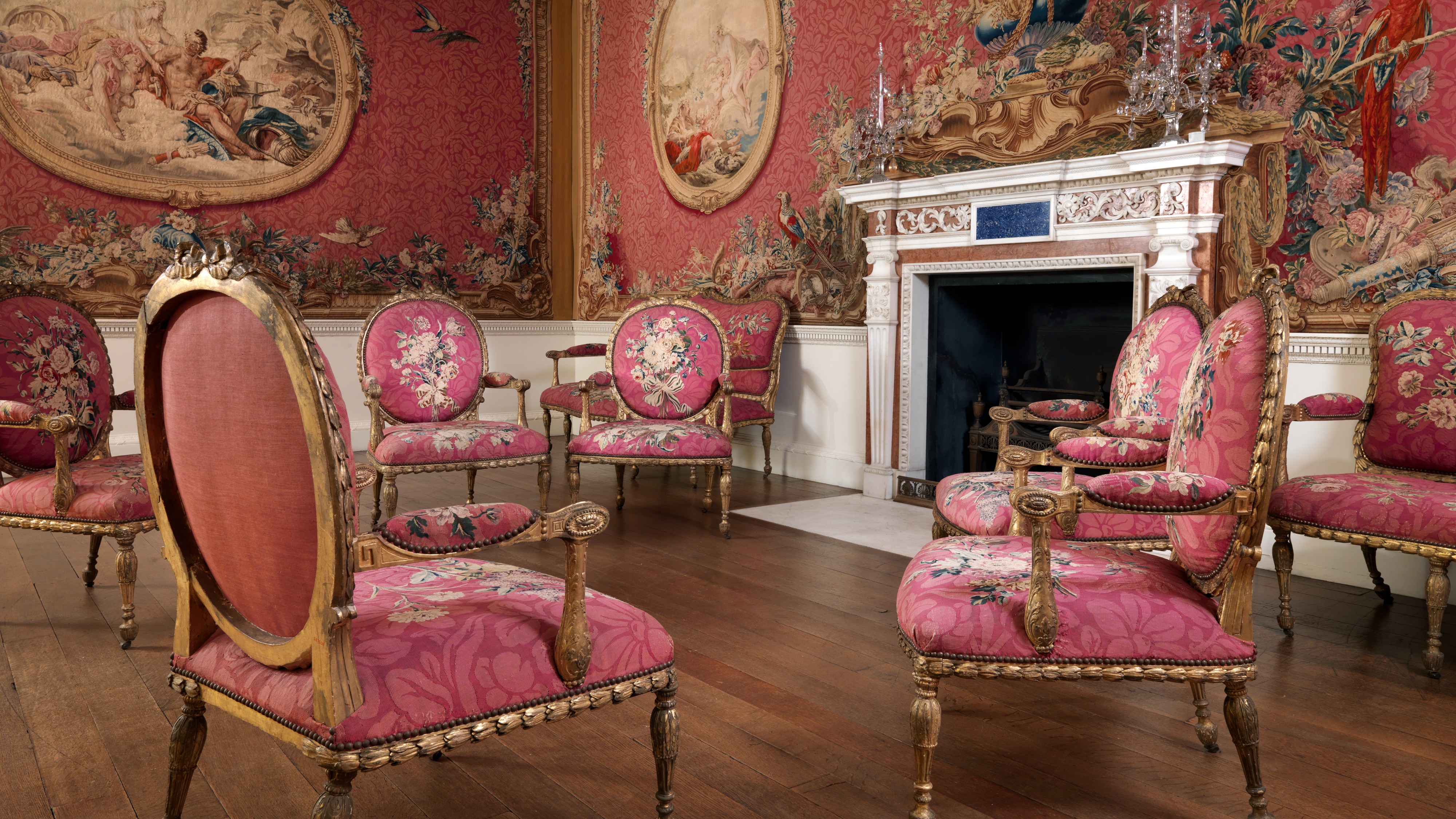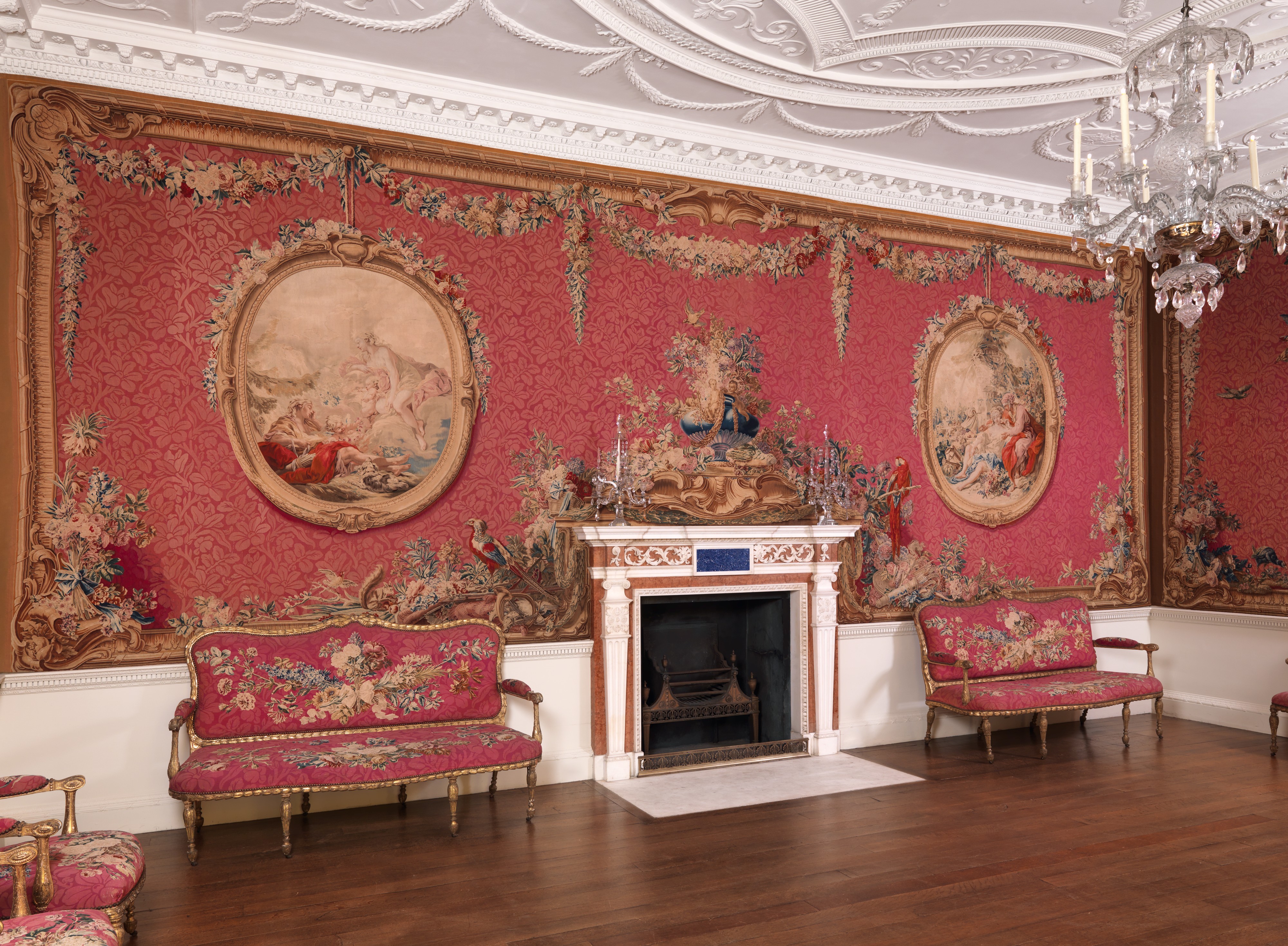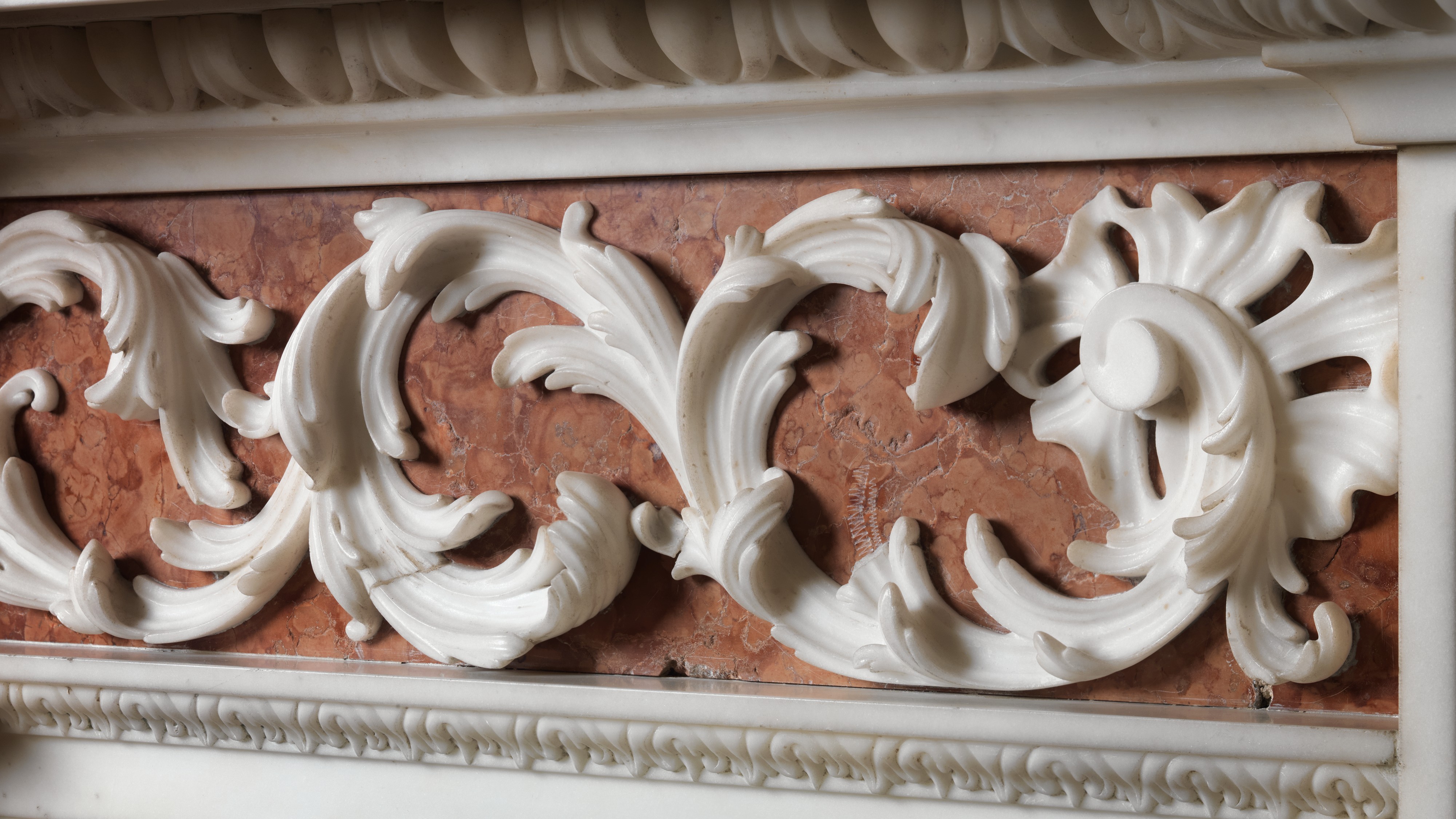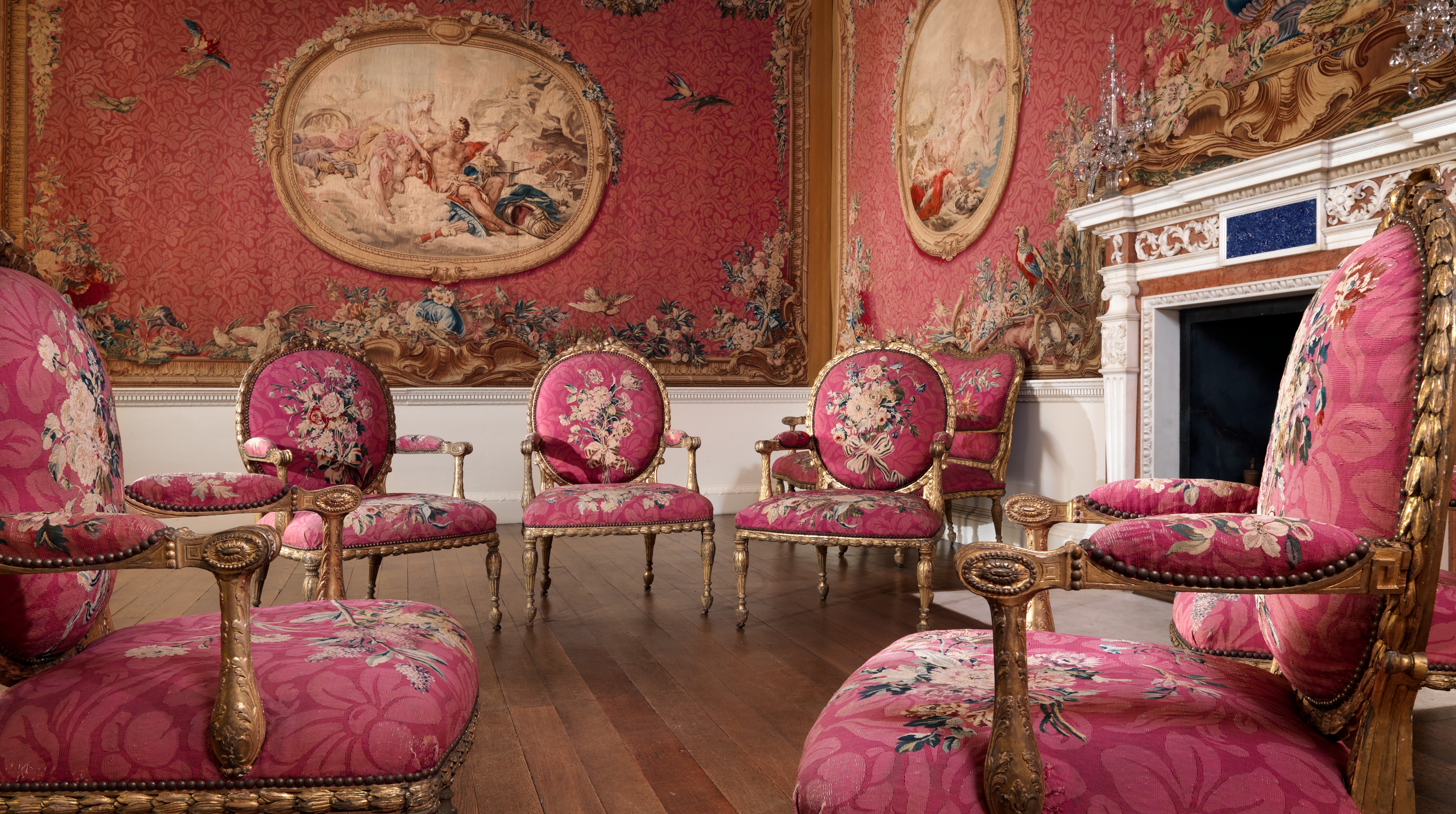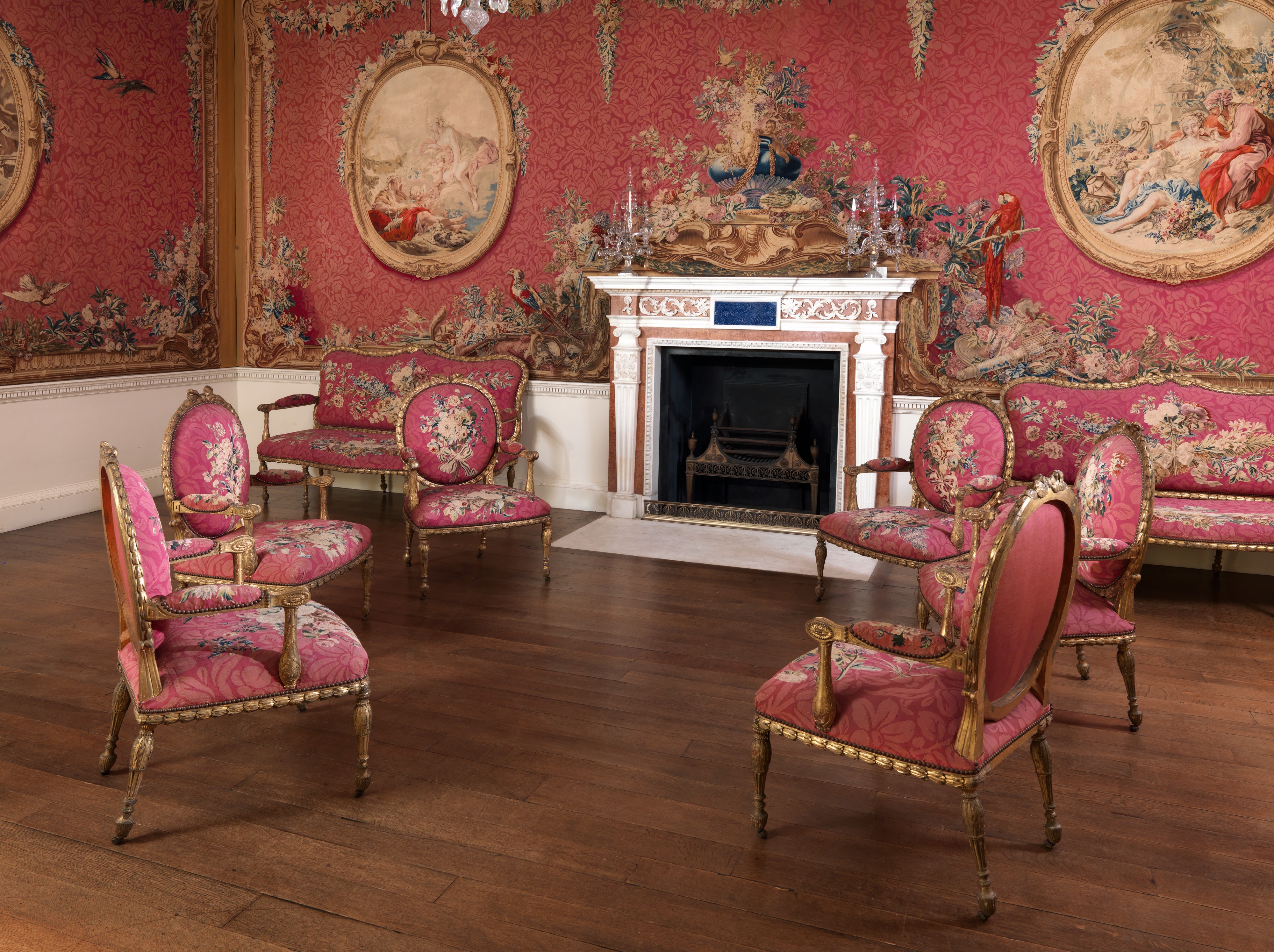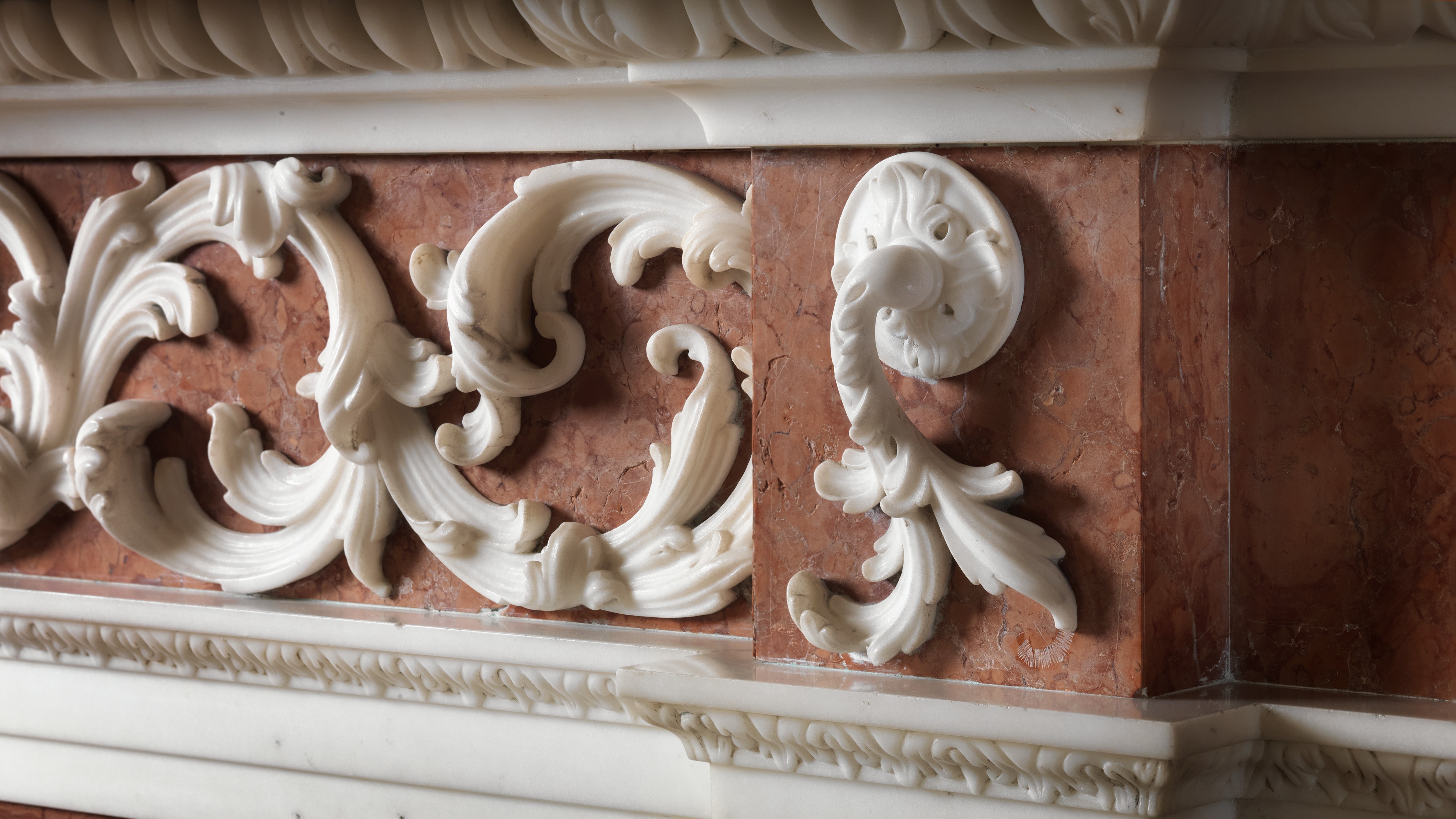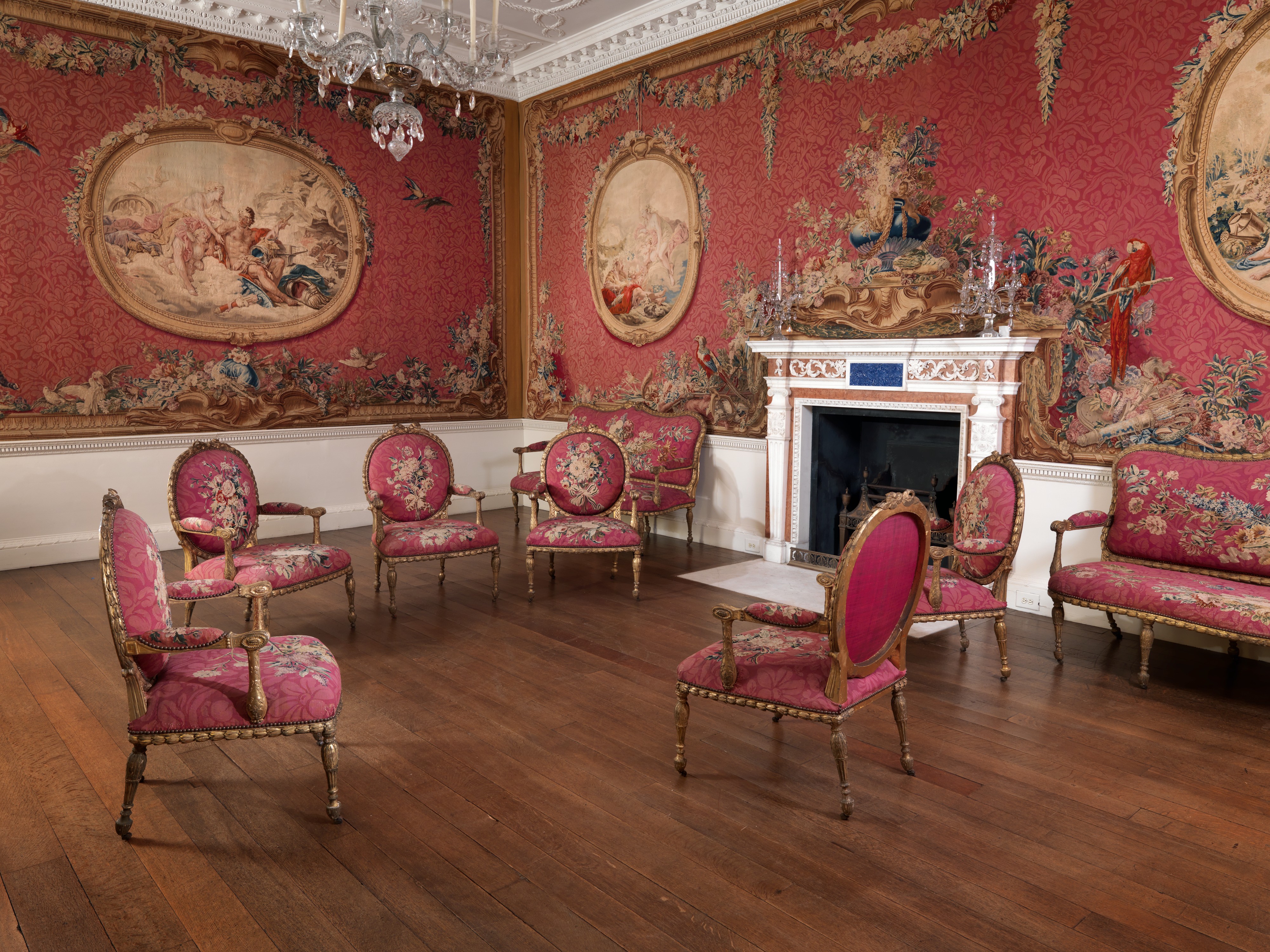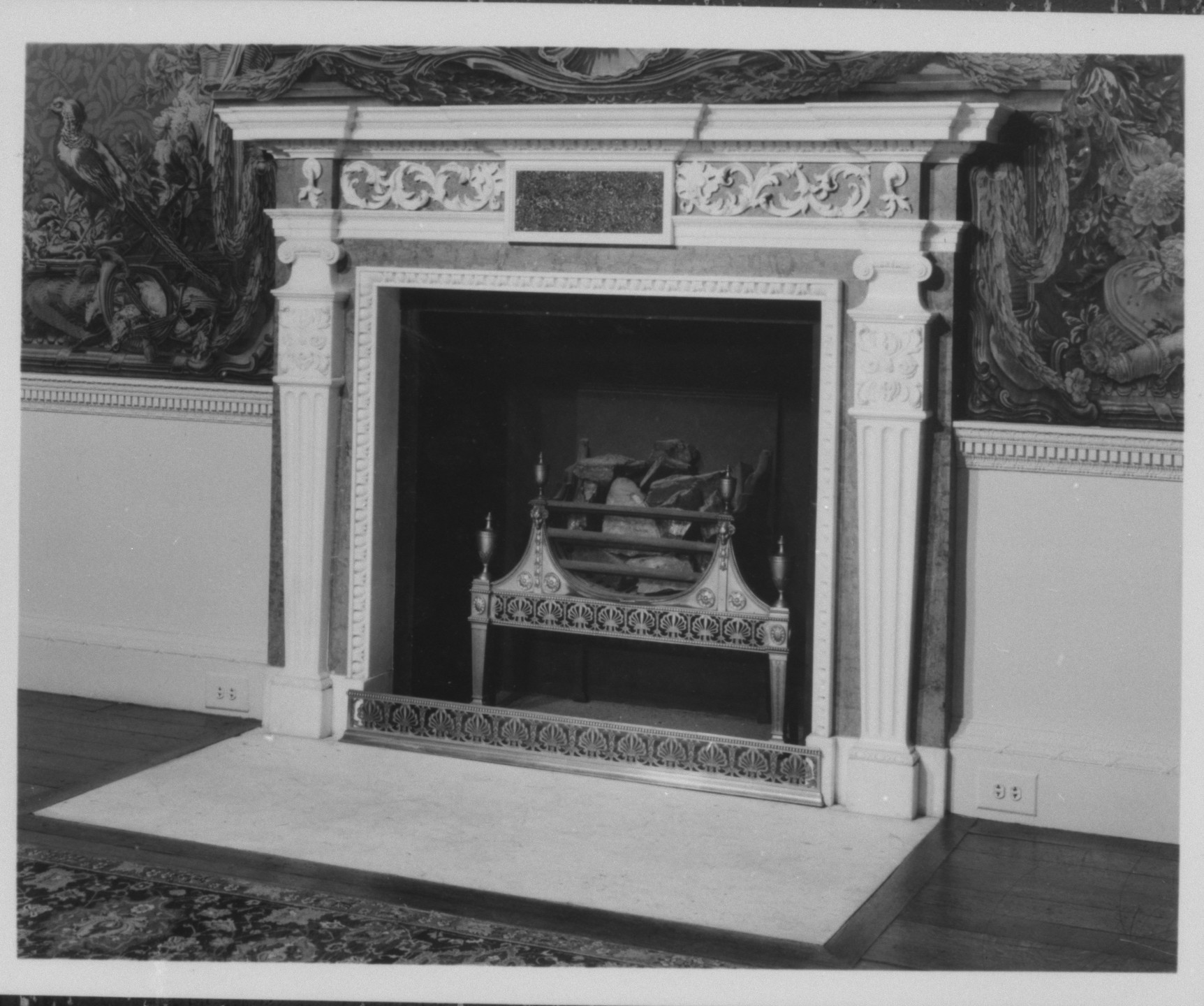Chimneypiece from the Tapestry Room from Croome Court
Lapis lazuli tablet provided by Joseph Wilton British
Carved by John Wildsmith
Lancelot "Capability" Brown (1718–1783) was responsible for the plan of the grounds at Croome Court and for the design of the house, which was his first essay in architecture. Parts of the interior were executed from Brown's designs between 1751 and 1760, when Robert Adam (1728–1792) replaced him as architect of Lord Coventry. The Tapestry Room was on the main floor of the house, facing the south, and lay behind the two windows on the far side of the columnar portico, as shown in the painting of 1758 by Richard Wilson (1714–1782).
Adam's pen-and-ink design for the ceiling is dated January 1763, the year the plasterwork was carried out by Joseph Rose (1746–1799). The names of the other craftsmen who worked on the architectural elements of the room are recorded in the building and furnishing accounts for the house, which have survived. The carving of the window and door frames, baseboard, and chair rail was executed by Sefferin Alken (act. 1744–83). The lapis lazuli tablet in the chimneypiece entabulature was provided by Joseph Wilton (1722–1803); John Wildsmith (act. 1746–69) carved the marble chimneypiece itself in 1760. The oak floor is the original and was laid down at the Museum following a diagram made while it was still in situ.
The Tapestry Room from Croome Court, Worcestershire, the seat of the Earls of Coventry, was begun in 1763 and finished in 1771. The sixth Earl of Coventry (1722–1809) commissioned these tapestries for Croome Court from Jacques Neilson's workshop at the Royal Gobelins Manufactory in Paris in August 1763. Portraying scenes from classical myths symbolizing the elements, the medallions are based on designs by François Boucher. Portraying scenes from classical myths symbolizing the elements, the medallions are based on designs by François Boucher. The set was delivered and in place by June 1771. The group was the first using this design to be woven with a crimson background and it may have been the first made specifically to extend around four walls of a room without architectural frames.
Due to rights restrictions, this image cannot be enlarged, viewed at full screen, or downloaded.
This artwork is meant to be viewed from right to left. Scroll left to view more.
